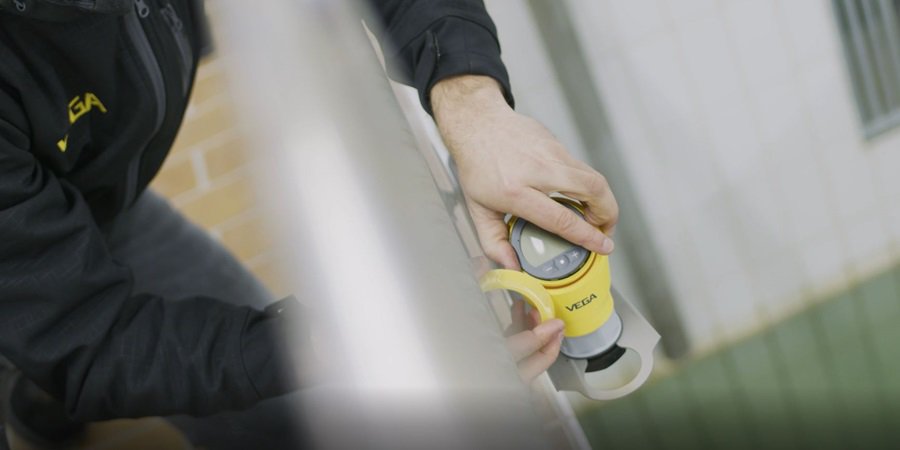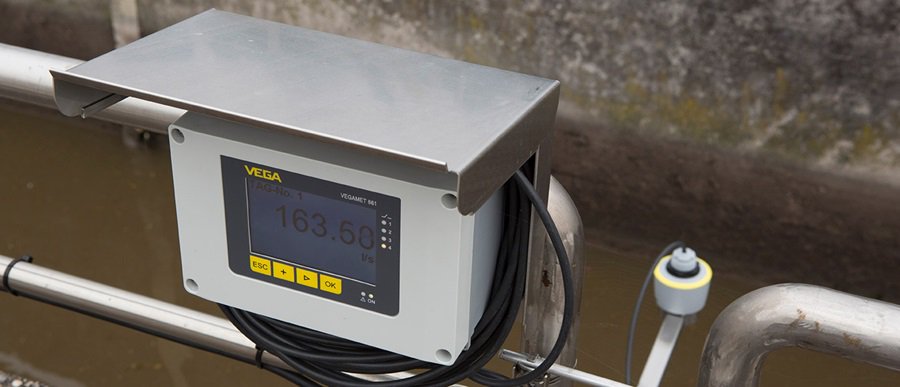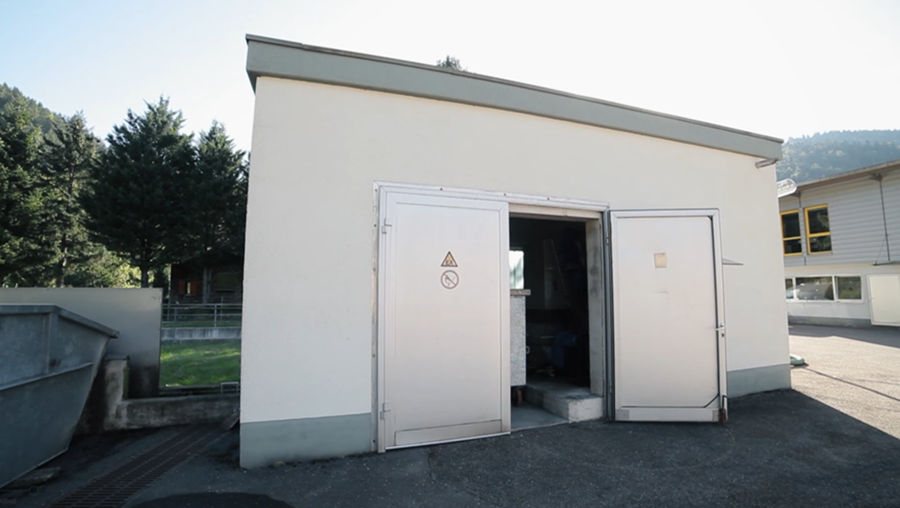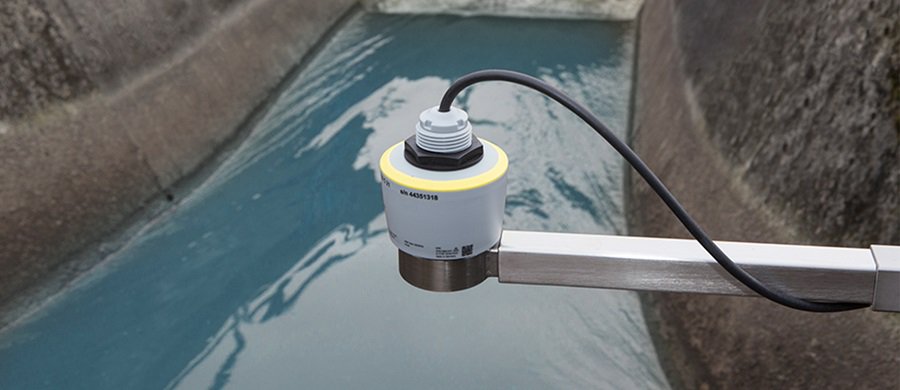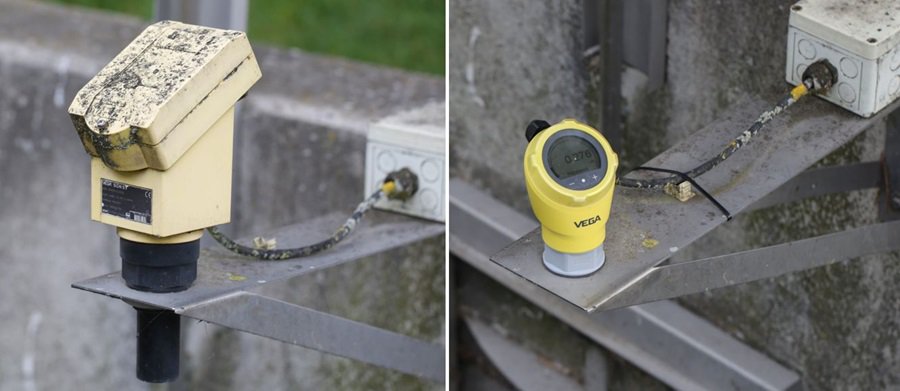Level and pressure measurement technology for water supply and water treatment – frequently asked questions
If so, you probably know that at the end of each live demo there is a question and answer session for all the participants, where our product managers answer your questions about sensors and applications.
For the drinking water and wastewater sectors, we would like to offer you the opportunity to read all the answers to the questions that have been asked.
1. Overfill protection
Is one radar sensor sufficient to provide level measurement and overfill protection at the same time?
Yes, one sensor is sufficient. VEGAPULS radar sensors are approved as overfill protection according to WHG (an official German environmental protection overfill standard) for exactly these cases.
When do I need additional overfill protection?
In general, a redundant solution obviously provides more security. VEGA radar sensors, however, also meet all requirements as a stand-alone solution. They are approved according to WHG (Water Resources Act) and provide a high level of safety and accuracy. Even the most noxious, corrosive gases or turbulent surfaces have no influence on the measurement.
What does the "Ü" symbol on the sensor mean?
The purpose of the "Ü" symbol on the sensor housing is to help with identification, because only VEGA radar sensors that are marked with a "Ü" have WHG approval as an overfill protection device.
2. Extreme application areas
How do radar sensors react to waves?
The influence of waves or turbulent water surfaces is minimal. With their very wide dynamic range, VEGAPULS radar sensors measure even the smallest signals and can therefore compensate for water movement very well.
Moving surfaces are a standard feature in water applications: Regardless of whether a container is being filled or water is simply flowing through a pump shaft. Radar sensors calculate a reliable average value from multiple reflected signals.
Do the sensors measure through surface sludge?
Sludge is very compact and cannot be measured through. However, the surface height of the sludge can be detected accurately, allowing a reliable level measurement.
In contrast to foam, which is generally easier to measure through, this does not work with sludge. If it is necessary to determine the exact height of the sludge, this can be done by combining a radar sensor and a pressure sensor. In such cases, the radar sensor detects the sludge surface; the pressure sensor detects the water level using hydrostatic pressure. The differential indicates the thickness of the sludge because its density is significantly different from that of water.
Do radar sensors also measure bulk solids?
All new VEGAPULS sensors are also suitable for measuring bulk solids. When selecting an instrument version, you can decide whether it is to be used for liquids or for bulk solids. The measuring ranges are the same for liquids and solids.
The radar sensors are not only suitable for water and wastewater, but also for other media. From water-based products, chemicals, acids and alkalis to auxiliary substances used in the wastewater industry and chemical products. They can also be used in all kinds of bulk solids applications. Thanks to their very good focusing, they are ideal for use in segmented containers, and for all kinds of bulk solids, like building materials, grain and many others.
Are the pressure sensors resistant to acids and alkalis?
The compact pressure sensors can be used for a variety of measuring tasks; the combination of stainless steel and ceramic covers a wide range of applications.
VEGA has many pressure sensors in its product catalogue for applications with especially aggressive media. These are available in a wide variety of materials and versions for extreme requirements: from Hastelloy to special sealing materials.
3. Connection possibilities
Are there signal outputs other than 4 ... 20 mA?
The sensors are available in different versions. The compact versions with the industry-typical 4 ... 20 mA. The cable versions with 4 ... 20 mA direct signal output, but also with other protocols such as Modbus.
With Modbus, the instruments can be easily connected to existing data loggers. The cable versions are suitable for SDI-12 communication, often used for river and lake level telemetry-based measurements. Since the Modbus sensors are also available in the "encapsulated" version, they are suitable for Zone 1, while the data logger can remain in Zone 2 or even outside the Ex area. Thus, no further measures need to be taken to supply or connect the sensors.
Do I automatically have Ex protection with the Modbus version?
Compact VEGA sensors in Modbus version have options for encapsulation for use in Ex areas.
In the Modbus version, encapsulation is possible for use in Zone 1. The sensors can be connected directly to an existing data logger without intrinsically safe outputs. So while the sensor is installed in Zone 1, the data logger remains in Zone 2 or outside the Ex area as required. This makes it easier for the user.
Are the sensors available with Profibus or Profinet?
Profibus is not available for the new, compact sensors. If Profibus PA is required, standard sensors from VEGA can be used. Profibus PA can be converted back to Profinet via a remote IO. Profinet is a network protocol that requires an Ethernet interface. VEGA two-wire sensors as well as controllers will implement PROFINET in the coming years.
Does the luminous display of the pressure sensors function without additional supply?
Yes, it also lights up with 4 ... 20 mA sensors, without requiring any additional power supply.
4. Controllers
Do the sensors with cable always need a controller?
No, for these sensors, either 4 ... 20 mA, Modbus or SDI 12 serves directly as cable output. The radar sensors work differently than ultrasonic transducers, which require a controller depending on the version. However, using a controller makes sense if, for example, an additional display is needed to provide more clarity on site. Pump control or flow measurement with totalisation can also be realised with a controller. These functions, as well as a data logger, are integrated in the range of VEGAMET controllers.
What data can I record in the controller?
The digital controller for robust use in the field contains an additional data logger. An SD card that can store up to 100 million selectable measured values is included.
How do I set up the controller for flow measurement?
All controllers for installation in the field, in a control cabinet or in a control panel have built-in linearisation curves for flow measurement, which can be easily activated via the setup assistant. This means that the linearisation curves for different flumes are already there, and only need to be selected and configured. A totaliser adds up the flow.
5. Explosion protection
Which Ex areas can the radar sensors be used in?
In general, they can be used in Zone 0 or Zone 1. All sensors are also available in intrinsically safe versions. This means that they replace previous intrinsically safe sensors 1 to 1. With encapsulation, the cable versions can readily be used in Zone 1. Because these do not need an intrinsically safe supply, and operate without a barrier, using them is easier than ever.
Is there a flameproof enclosure?
The sensors are only available with plastic housing, not flameproof encapsulation. However, they have all approvals for the US market.
In contrast to the US market, flameproof encapsulation is hardly ever used in Germany. Since these compact sensors are inexpensive, robust and waterproof a plastic body was the obvious choice. Flameproof encapsulation, on the other hand, requires the much more expensive metal housing. With their worldwide approvals, the sensors nevertheless reliably cover all Ex area requirements.
6. Flow
Can the sensors also be used in open flumes?
Yes, the integrated linearisation curves make it possible. This applies to Venturi flumes as well as individual curves.
The linearisation curves are stored directly in the sensor or in the controller and can be easily assigned to a flume with the help of the adjustment tools. This makes it possible to directly display the current flow rate. A totaliser integrated in the controller can also be activated to store the total flow volume.
7. Radar or ultrasonics?
Are there any disadvantages to radar?
No. The prices are the same, and radar performs better and in more applications. So it makes sense to make the switch to radar technology.
Will VEGA continue to make ultrasonic sensors?
VEGA will replace ultrasonic technology in the long term. However, it will be retained as long as there is customer demand. VEGA has had ultrasonics in its product range for over 40 years and is very familiar with the technology and its weaknesses. In the past, ultrasonics was the low-cost, non-contact measuring principle of choice. That has changed. Why it makes more and more sense to switch to radar.
> All videos of the online live demos
Related industries

Wastewater treatment

Drinking water supply
Related products
Export this article
Download as PDFShare this article
Comments ({{comments.length}})
{{getCommentAuthor(comment, "Anonymous")}} {{comment.timestamp | date : "dd.MM.yyyy HH:mm" }}
{{comment.comment}}



